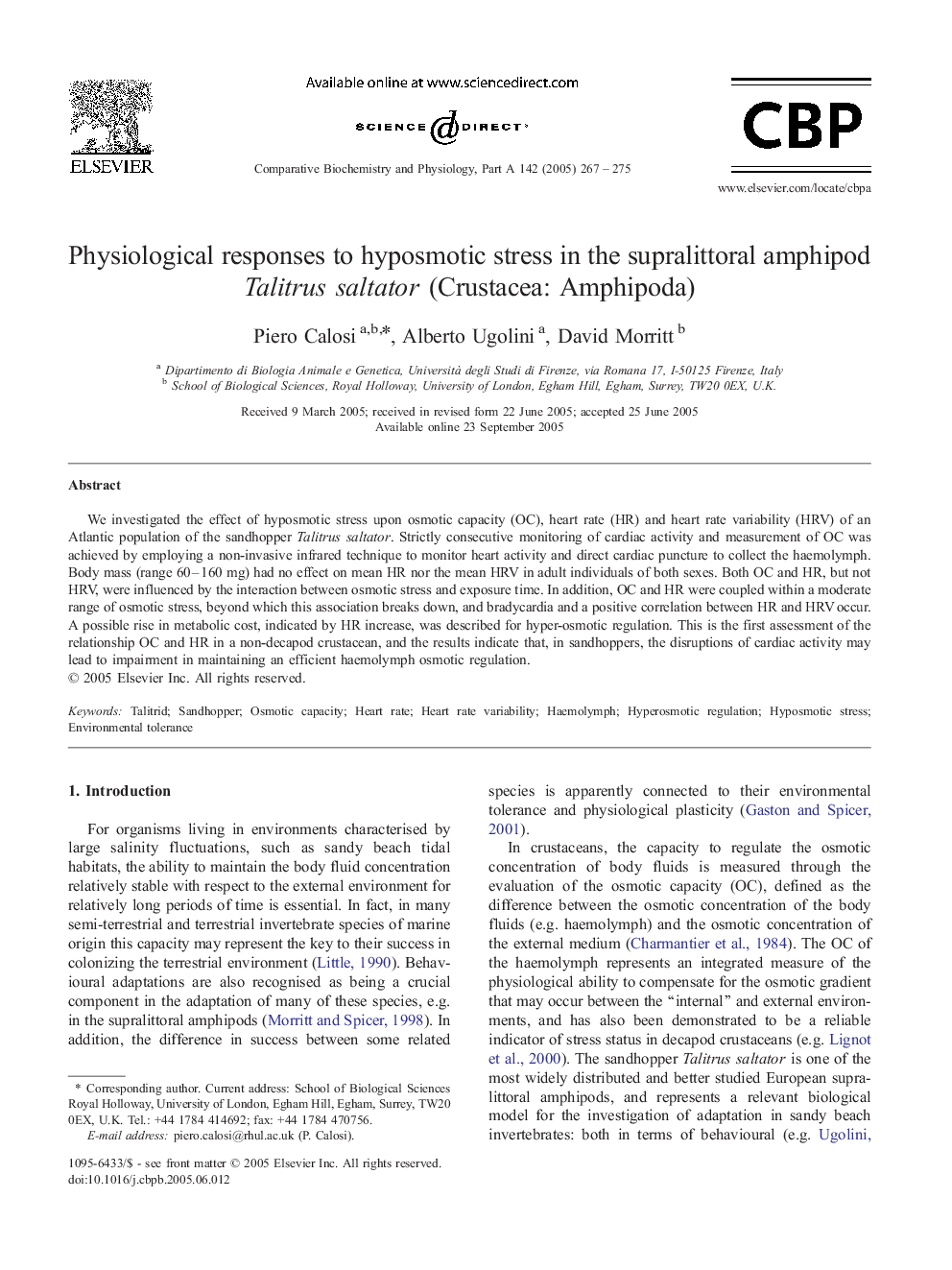| Article ID | Journal | Published Year | Pages | File Type |
|---|---|---|---|---|
| 10819308 | Comparative Biochemistry and Physiology Part A: Molecular & Integrative Physiology | 2005 | 9 Pages |
Abstract
We investigated the effect of hyposmotic stress upon osmotic capacity (OC), heart rate (HR) and heart rate variability (HRV) of an Atlantic population of the sandhopper Talitrus saltator. Strictly consecutive monitoring of cardiac activity and measurement of OC was achieved by employing a non-invasive infrared technique to monitor heart activity and direct cardiac puncture to collect the haemolymph. Body mass (range 60-160 mg) had no effect on mean HR nor the mean HRV in adult individuals of both sexes. Both OC and HR, but not HRV, were influenced by the interaction between osmotic stress and exposure time. In addition, OC and HR were coupled within a moderate range of osmotic stress, beyond which this association breaks down, and bradycardia and a positive correlation between HR and HRV occur. A possible rise in metabolic cost, indicated by HR increase, was described for hyper-osmotic regulation. This is the first assessment of the relationship OC and HR in a non-decapod crustacean, and the results indicate that, in sandhoppers, the disruptions of cardiac activity may lead to impairment in maintaining an efficient haemolymph osmotic regulation.
Keywords
Related Topics
Life Sciences
Biochemistry, Genetics and Molecular Biology
Biochemistry
Authors
Piero Calosi, Alberto Ugolini, David Morritt,
